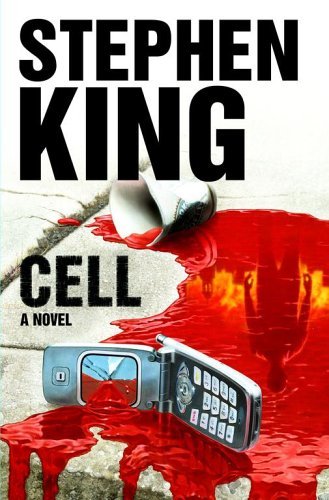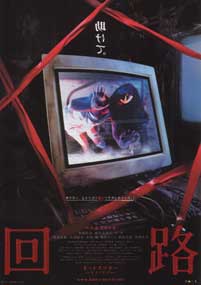Horror RPGs can learn a lot from how F.E.A.R. mixes horror and action.

May be found at the following website: MobyGames (Archive link), Fair use, File:FEAR DVD box art.jpg - Wikipedia
The F.E.A.R. series focuses on an elite group in the United States Army tasked with investigating supernatural phenomena. Their investigation uncovers a private military company's secret research program, generating psychic clones, with the most powerful being a young girl named Alma. In addition to faceless clone enemies, your character can slow down time (essentially borrowing the "bullet-time" mechanic used in the Matrix movies).
F.E.A.R. pits psychological horror against a character with an enormous amount of firepower at his disposal. It's an uneasy mix that can be challenging to pull off, and that tension can be seen in modern tabletop role-playing games like Call of Cthulhu's descendant, Delta Green. But when F.E.A.R. works well, the level design is instructive in how GMs can run effective modern horror games.
Debris serves multiple purposes. An empty cubicle with a flickering computer that displays a desperate plea for help provides both cover and adds texture to the environment. Conversely, doors that have been barricaded by desks and chairs act as a barrier (F.E.A.R. uses this a lot to prevent the player from wandering too far out of the environment) as well as tells a story of a siege. And of course, a trail of blood can lead PCs somewhere important or potentially to their doom.
Just as important as darkness is unreliable light. Be it flickering monitors, emergency lights, or swinging overhead lamps, lighting can tell its own story. F.E.A.R. makes all visual displays (monitors, lights, etc.) flicker as a sign of psychic interference from any non-corporeal foes, including Alma herself. In RPGs, this can range from just describing atmospheric effects to a random chance of technology not working.
In the extreme, some weapons may not work well (shooting at ghosts seems impractical, but both are viable options in F.E.A.R. and D&D) or work at all. This can make players frustrated if an alternate path isn't provided -- F.E.A.R. presents these kinds of obstacles but then suggests alternate weapons that may take significant risk to obtain them.
In tabletop games this can be somewhat nebulous. Often, the only way a player knows a monster can't be hurt by mundane weapons is to hit it first. In video games, the player usually figures this out by dying and starting over. But in tabletop play where there aren't save points, the party then needs to switch gears quickly to something else. This requires GMs telegraphing well ahead of time to use an alternate method, or provide in-combat hints that one weapon or damage type is more viable than another.
On a more mundane level, simply counting down ammunition (with no hope of finding more) can be terrifying. Inventory management can be a pain in tabletop games if PCs aren't prepared to keep track of it, so it's important to make it clear at the beginning of the game that ammo matters.
The trope definer of this is a deleted scene from Aliens, in which automated turrets hold the xenomorphs at bay, spraying thousands of bullets at the enemy ... until they run out.
In tabletop games, this is best accomplished through another map entirely. How much of it is "real" is an open question that should be handled carefully (do the monsters there only inflict psychic damage? is it a dream state, only experienced when the character is unconscious?). In a horror game where separating the party is often a villain's goal, it's a little easier to pull off.
Your Turn: What are your tips for inserting horror elements into action RPGs?
May be found at the following website: MobyGames (Archive link), Fair use, File:FEAR DVD box art.jpg - Wikipedia
Face Your F.E.A.R.
F.E.A.R. is an acronym for First Encounter Assault Recon, a first-person action shooter that mixes Japanese-horror (j-horror) tropes popularized by movies like The Ring and The Grudge series. J-horror features haunted houses, monstrous mothers, and broken families, mixing psychic powers with modern technology.The F.E.A.R. series focuses on an elite group in the United States Army tasked with investigating supernatural phenomena. Their investigation uncovers a private military company's secret research program, generating psychic clones, with the most powerful being a young girl named Alma. In addition to faceless clone enemies, your character can slow down time (essentially borrowing the "bullet-time" mechanic used in the Matrix movies).
F.E.A.R. pits psychological horror against a character with an enormous amount of firepower at his disposal. It's an uneasy mix that can be challenging to pull off, and that tension can be seen in modern tabletop role-playing games like Call of Cthulhu's descendant, Delta Green. But when F.E.A.R. works well, the level design is instructive in how GMs can run effective modern horror games.
Mundane Environments, Horrific Results
F.E.A.R. rarely takes place in military installations. Much of the action is in abandoned schools, bombed out buildings, and empty offices. Each of these environments tells a story about what happened there through blood, blocked exits, overturned furniture, and abandoned computers.Debris serves multiple purposes. An empty cubicle with a flickering computer that displays a desperate plea for help provides both cover and adds texture to the environment. Conversely, doors that have been barricaded by desks and chairs act as a barrier (F.E.A.R. uses this a lot to prevent the player from wandering too far out of the environment) as well as tells a story of a siege. And of course, a trail of blood can lead PCs somewhere important or potentially to their doom.
Be Afraid of the Dark
Unlike fantasy settings where various species can regularly see in the dark, most horror games feature regular humans who need light to see. This makes the lack of light a critical factor in creating horror.Just as important as darkness is unreliable light. Be it flickering monitors, emergency lights, or swinging overhead lamps, lighting can tell its own story. F.E.A.R. makes all visual displays (monitors, lights, etc.) flicker as a sign of psychic interference from any non-corporeal foes, including Alma herself. In RPGs, this can range from just describing atmospheric effects to a random chance of technology not working.
Scarcity of Resources
In games where firepower is readily available, weapons give a sense of comfort against the unknown and can be equally devastating when they fail.In the extreme, some weapons may not work well (shooting at ghosts seems impractical, but both are viable options in F.E.A.R. and D&D) or work at all. This can make players frustrated if an alternate path isn't provided -- F.E.A.R. presents these kinds of obstacles but then suggests alternate weapons that may take significant risk to obtain them.
In tabletop games this can be somewhat nebulous. Often, the only way a player knows a monster can't be hurt by mundane weapons is to hit it first. In video games, the player usually figures this out by dying and starting over. But in tabletop play where there aren't save points, the party then needs to switch gears quickly to something else. This requires GMs telegraphing well ahead of time to use an alternate method, or provide in-combat hints that one weapon or damage type is more viable than another.
On a more mundane level, simply counting down ammunition (with no hope of finding more) can be terrifying. Inventory management can be a pain in tabletop games if PCs aren't prepared to keep track of it, so it's important to make it clear at the beginning of the game that ammo matters.
The trope definer of this is a deleted scene from Aliens, in which automated turrets hold the xenomorphs at bay, spraying thousands of bullets at the enemy ... until they run out.
The Unhappy Place
Part of F.E.A.R.'s backstory is the tragic upbringing of Alma, who was treated terribly as a child. Her shattered innocence is conveyed through flashbacks and dimensional warping in which the protagonist is thrust into an alternate, hellish dimension. This keeps the player off-center but at the same time tells progresses the game's narrative by having the player experience it in real time.In tabletop games, this is best accomplished through another map entirely. How much of it is "real" is an open question that should be handled carefully (do the monsters there only inflict psychic damage? is it a dream state, only experienced when the character is unconscious?). In a horror game where separating the party is often a villain's goal, it's a little easier to pull off.
Find Your F.E.A.R.
I've tried to insert these elements into a a D20 Modern/Call of Cthulhu inspired game, but not all game mechanics support it. For a first-person shooter, F.E.A.R. is surprisingly successful in inserting horror into a game that's all about violent power. It's possible, but it's not easy.Your Turn: What are your tips for inserting horror elements into action RPGs?






